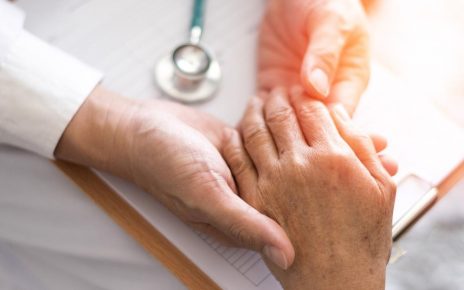Osteopenia is a bone condition where the bone mineral density is lower than normal. Bones are made of minerals like calcium and phosphate. Osteopenia is considered to be a precursor of a similar bone condition called osteoporosis. But in many cases osteopenia may not lead to osteoporosis.
Definition of osteopenia
Osteopenia is defined as a bone mineral density T-score between -1.0 and -2.5. This definition was coined by the World Health Organization in June 1992. The expert group defined the condition that means bone density that was one standard deviation below that of an average 30-year-old white woman. According to the definition osteoporosis is bone density 2.5 standard deviations or more below that 30-year-old.
Pathology of osteopenia
Osteopenia is a condition in which the bones lose the minerals like calcium and phosphate. This results in weak bones that become prone to fractures. When bone loss becomes more severe, the condition is referred to as osteoporosis.
Symptoms of osteopenia
In the early stages of osteopenia and osteoporosis there may be no symptoms. With continued bone loss there may be a propensity for fractures. Common fractures include those of spine, wrists, or hips.
Before fractures there may be bone pain. Common symptoms include neck or low back pain, loss of height, stooped posture and tenderness over long bones.
Risk factors for osteopenia
Osteopenina and osteoporosis may occur commonly:
- in females after menopause
- those who take steroids or other medications like protease inhibitors used in HIV infection that cause bone loss
- smokers
- alcoholics
- those who are underweight
In females after menopause, bone loss occurs due to declining female hormones that maintains normal bone structure. Premature babies are also at risk of osteopenia. Anti-HIV medications can cause negative side effects that may increase the risk of osteopenia and osteoporosis.
Diagnosis of osteopenia
Osteopenia can be diagnosed on a radiograph as a visual loss of bone density. Low bone density is detected using a dual energy x-ray absorptiometry (DEXA) scan. This can help in diagnosis of both osteopenia and osteoporosis. This is a painless, non-invasive procedure. The bone mineral density result that is obtained is compared to people of the same age and health to see if the bones are weaker than they should be.
Osteopenia treatment
Patients with bone loss need evaluation of the condition. Drugs that lead to bone loss if taken need to be changed or stopped. Treatment consists of dietary supplements like Calcium and Vitamin D.
Other medications include bisphosphonates like raloxifene. These are primarily use in osteoporosis. Calcitonin and hormone replacement therapy for postmenopausal women may also be prescribed to slow bone loss and reduce the risk of fractures.
In addition, assistance in the form of walker, canes and crutches may be used. Patient is counselled to prevent falls. Patient is advised to perform regular weight bearing exercise like walking, jogging, dancing, and other physical activities that help to make the bones stronger. They are advised to abstain from excess alcohol and quit smoking.
Sources
- www.aidsinfo.nih.gov/…/OsteonecrosisOsteoporosisOsteopenia_FS_en.pdf
- www.bamc.amedd.army.mil/…/…20(Osteopenia%20and%20Osteoporosis).pdf
- http://www.ipr2011.org/documents/707.pdf
- www.eu.elsevierhealth.com/…/9780443070303.pdf
Further Reading
- All Osteopenia Content
- What Causes Osteopenia?
- Osteopenia Treatment
Last Updated: May 14, 2019

Written by
Dr. Ananya Mandal
Dr. Ananya Mandal is a doctor by profession, lecturer by vocation and a medical writer by passion. She specialized in Clinical Pharmacology after her bachelor's (MBBS). For her, health communication is not just writing complicated reviews for professionals but making medical knowledge understandable and available to the general public as well.
Source: Read Full Article



